Este post também está disponível em:
Português
English
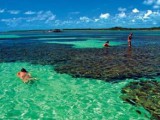
The Island of Boipeba is located in the Archipelago of Tinharé, which makes up the municipality of Cairu, located in the Lower South of Bahia, which brings together history and a paradisiacal landscape.
Boipeba is surrounded on one side by the ocean and on the other by the estuary of Rio do Inferno and stands out for its rare natural beauty and great diversity of its ecosystems.
The natural pools, with diversity of fish and coral reefs, associated with the preserved beaches of crystal clear waters and white sands are an invitation to visitors who wish to enjoy the summer outside the big cities.
And who really said that Boipeba is rustic?
Practically untouched, yes, a virgin Bahian island, but the place already has good inns and restaurants. Nothing too sophisticated, because simplicity is a luxury.
Boipeba includes dense Atlantic Forest, sandbanks, dunes, extensive mangroves and paradisiacal beaches with coconut trees and reefs of great ecological and landscape value.
The reefs extend along the coast and make the beaches sheltered from waves and currents. These reefs are very wide and cut by channels and pools.
They have a wide variety of corals, algae, fish, molluscs, urchins, stars and others. In addition, sea turtles can be found in the area, which lay their eggs on several beaches on the island.
The forested areas found on the island serve as shelter for several species of fauna, highlighting a wide variety of birds and hummingbirds, armadillos, teiús, foxes and others.
Take a boat ride in the mangroves, dive in the natural pools, enjoy an octopus moqueca with banana after a plate of live oysters, walk along deserted beaches, cross a river on foot…. Because Boipeba is like that, a luxury.
In Boipeba, sailing is necessary even for those arriving by plane. Because boat trips are essential to get to know the island, classic programs of the place.
Watch the video about Boipeba in Bahia
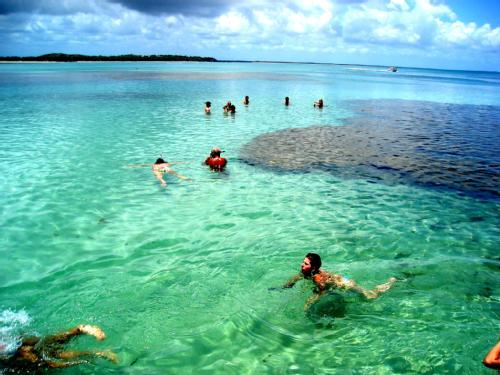

Ilha de Boipeba - Reportagem
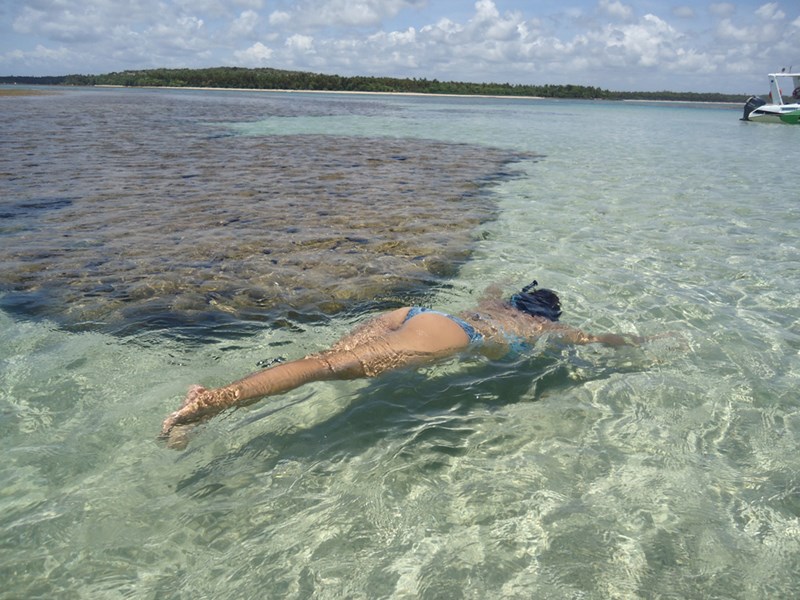
Ilha de Boipeba - Guia
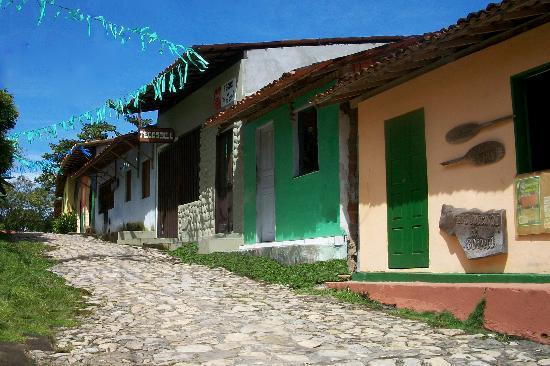
Ilha de Boipeba - Reportagem
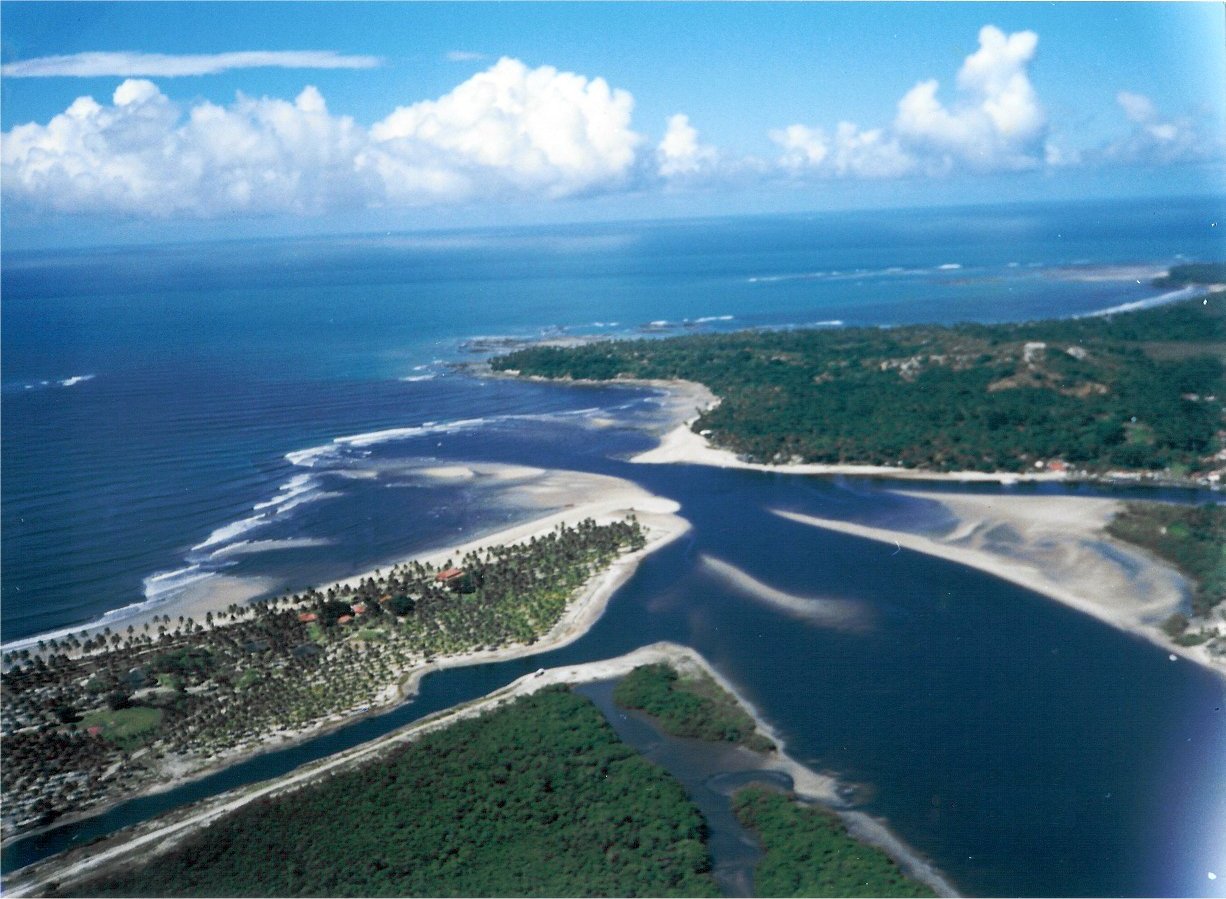
Ilha de Boipeba - Drone02:56
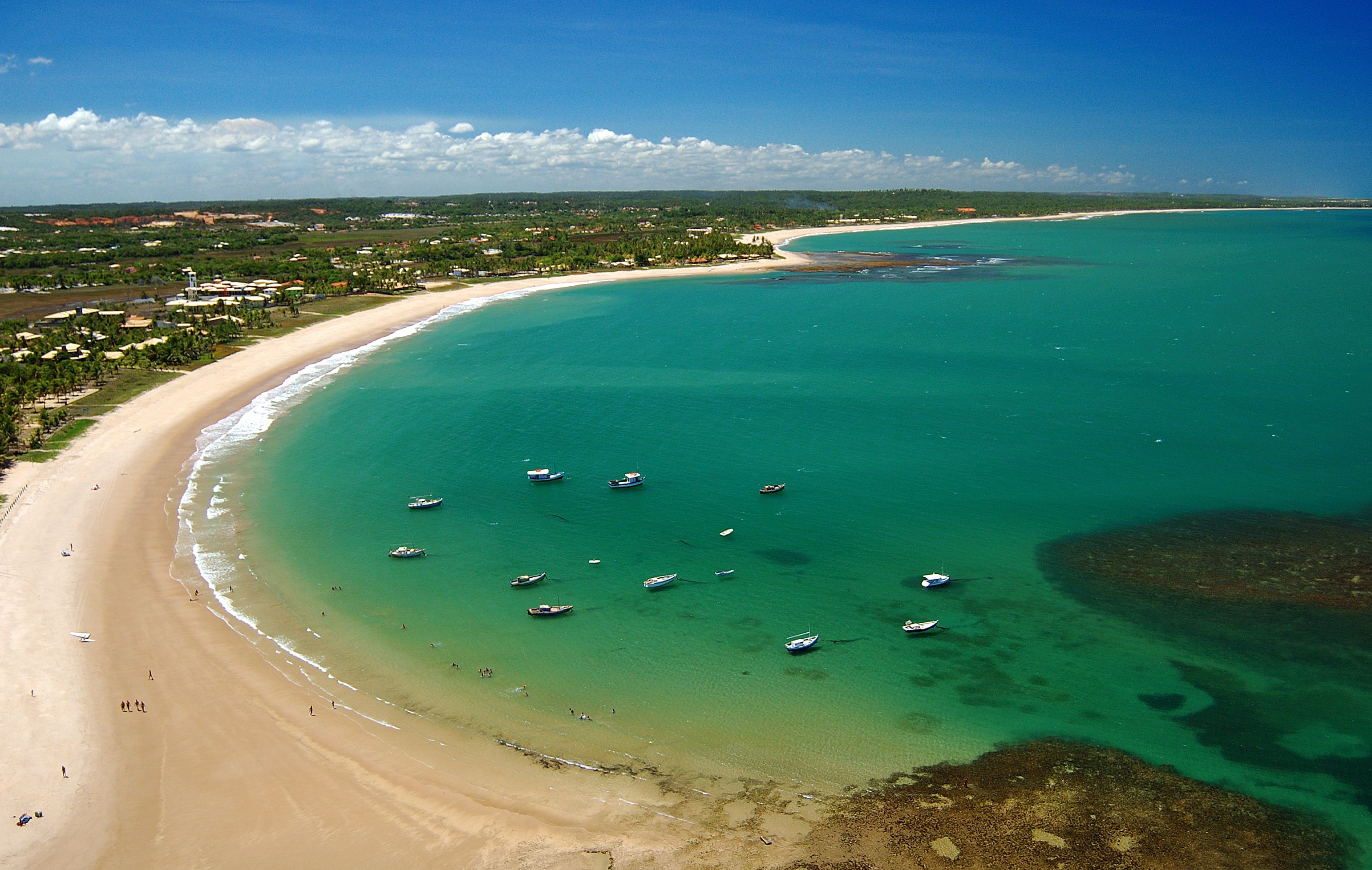
Ilha de Boipeba - Guia Turismo03:27
So much so that most of the tourists are “foreigners”: they leave Morro de São Paulo, go to Boipeba and return the same day, usually having lunch with Guido’s lobsters, the most famous character on the island, or in one of the good restaurants in Moreré.
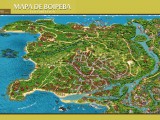
For those who are in Boipeba, there are several types of tours, which can be hired at the guides association or at the inns: the shorter ones go only to the natural pools, which are very close, and the longer ones take the whole day, giving a complete tour of the island.
Do not miss it. It is possible to have a jangadeiro to call your own: some boatmen take tourists in charming sailing canoes.
Another rustic tour is at the end of the afternoon, with the visitor wandering through the mangrove and watching the sunset in the waters of the river.
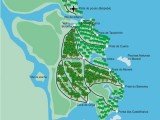
The canoe ride is beautiful, surreal, everyone loves it.
As in many destinations in the Northeast, beach programs are governed by the tide: both to enjoy the natural pools, the first stop, and the sand crown, the last anchorage before lunch at Cova da Onça, the sea must be low.
The same goes for hiking to the beaches near Velha Boipeba, what you might call the main urban core of the area.
Thankfully, you are not in Morro de São Paulo, and you can calmly enjoy Boipeba, which, unlike its more famous neighbor, has managed to remain almost immune to the ills of overexploitation of tourism.
The tour around the island, done in speedboats, is a must.
It starts in the morning, at a variable time, which will be announced at the time of arranging the program, according to the tide table.

Opus fisherman in the natural pools
The first stop is the natural pools of Boipeba, with everything we love: clear water, pleasant temperature, a battalion of sargentinhos swimming, other bigger fish.
Don’t forget to bring a mask and snorkel, or rent the set.
And there are rare refinements: the number of boats is infinitely lower than what we are used to seeing in destinations like Porto de Galinhas, Maragogi and Maracajaú, and it is beautiful to see the work of the octopus and lobster fishermen, who often get there by walking at low tide.
Then we head to Ponta dos Castelhanos, a beach with calm waters.
Almost deserted, let’s say, because a family sets up a stall there selling beer, coconut water and caipirinhas, very welcome liquids at this height.
Next, a stretch to a crown, a sandbank that only appears at low tide. Once again, an unlikely business appears: two boys sell caipirinhas made from typical Bahia fruits. I tasted and approved the mangaba.
Hunger is already hitting. Time to go to Cova da Onça, where there are four restaurants. The guides, to maintain the policy of good neighborliness, take the groups each day to one, and they are almost equivalent.
But the one named after the village serves the best food: the appetizer fried shrimp and the lobster moqueca were excellent.
Those who like oysters should hold back on lunch. Because on the way back to the village of Boipeba, when the boat sails first on the Rio dos Patos and then on the Rio Grande, passing through the middle of the mangrove at least once, another stop is made at a shellfish farm, where you can taste oysters freshly taken out of the water. Just squeeze the lemon.
The tour is no soap opera, but it has a happy ending. A special lobster at the end of a walk by the sea
Cueira Beach in Boipeba
At around 11am every morning on Cueira beach, the wood starts to burn. And it’s a pleasure to see the preparation, equally simple, outdoors, on the edge of the beach.
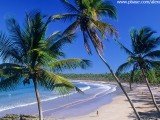
First, the crustacean is cut in half, then quickly boiled in seawater, which already tempers it. Next, a large frying pan, similar to that of paella, gets a little butter and oil. One by one, the lobster halves are added, frying and perfuming the beach. The seasoning? Just a little more salt, and a few slices of onion, just to give it a taste.
Eating a dish like this, with your hands, having your feet sunk in the sand, is one of those things that are priceless. A tip: don’t settle for just the meat of the tail, because the paws and claws hold incredible pieces, even if small.
But watch out for the spines. If in doubt about how to do it, ask a native, who will be able to explain the procedure for removing the most hidden meats from the animal.
The accompaniment is a good vinaigrette and flour from Bahia, which needs no introduction, as well as pieces of lemon and a hot pepper. Leave your worries aside: dip the meat first in the vinaigrette and then in the flour, finishing the preparation with lemon and pepper to taste.
I can assure you that every mouthful is a tremendous delight. It was one of the best lobsters of my entire life (and a portion for two costs about R$ 50, can you believe it?). Yeah, didn’t I say that Boipeba is a luxury?
Many people go there at Guido, eat, and then go back to Boipeba. But it’s worth going on until you reach the village of Moreré, where about 250 people live. You can only get there at low tide, with the right to cross a river.
Boca da Barra, in Velha Boipeba
Boipeba is still a very well preserved place, with almost untouched nature.
But its landscape can change, and a lot. A shopping center is being built near the Boca da Barra pier, with apartments on the top floor.
The developer is Italian Fabio Perini, owner of Fazenda Pontal, which produces eggs, dairy products and ice cream on the island of Tinharé (on the other side of the Rio Grande, which flows into Boca da Barra), and where the runway where planes from Salvador descend is located.
The shopping center will contrast with the houses of Velha Boipeba, a charming village in its rusticity, with low buildings and old houses. The businessman also owns a property on the island of Boipeba itself, which runs from Boca da Barra to just beyond Cueira beach.
Today it is a large coconut plantation, but the activity may change in the coming years.
They say he wants to build a resort there in Cueira, but the directors of the company, who came here to negotiate with us, assure us that they are planning a condominium. Whatever.
There will even be a road, it seems – says guide Marcos Gonçalves, who is against the project, recalling that it was the community’s union that managed to expel the tractors that transported tourists from the island (today there are few left, only for garbage collection and to make the journey between Moreré and Velha Boipeba).
Cheese and ice cream are sold at a stall near the pier, in front of the place where the boats that bring tourists from the airport dock. Prejudice against progress aside, the products are worth tasting.
But even better is the mangaba ice cream sold in the village. Or even the stuffed bread from Lanchonete do Carlinhos, which is on the slope going up to Velha Boipeba.
The highlight goes to the version of the so-called “pãozinho delícia”, a hit in Salvador’s bakeries, which there gets a fancy version, bigger and with lots of filling, as well as light and fluffy pizzas with plenty of toppings.
Eating well with simplicity is a hallmark of the island’s traditional cuisine, practiced in restaurants such as Janaína, Jorge Som and Dona Raimunda, three addresses run by natives of Boipeba.
Dona Raimunda prepares a sensational free-range chicken. Our cuisine does not live on moqueca alone – says guide Marcos Gonçalves.
At the same time, there are inns and restaurants that diversify this offer of hospitality. To the sadness of visitors, the restaurant Chez Iris and Igor, run by a couple, he from Rio, she from France, who met in Europe and found in Boipeba the dream scenario to open a restaurant, has closed its doors.
Igor returned to Rio, but Iris remains in Boipeba, now looking for a new address to exercise her delicate cuisine, capable of producing an eggplant flan with tomato sauce, or a chocolate and caramel tart with macadamia to enternecer.
Tavinho, creator of the Museum of Bones, in Velha Boipeba
Marcos, as well as Dona Raimunda, Guido das Lagostas, and his brother, Tavinho, who created a curious “Bone Museum” in the village of Velha Boipeba, make up a society of very rich culture.
Besides being beautiful, Boipeba is an island of unique people. They take care of the place where they live, cook well and tell good stories.
This social capital that Boipeba has is fantastic. The locals are incredible people, great storytellers, people who love their land. Boipeba is not only a beautiful setting, it is a place of very interesting people – says Leandro.
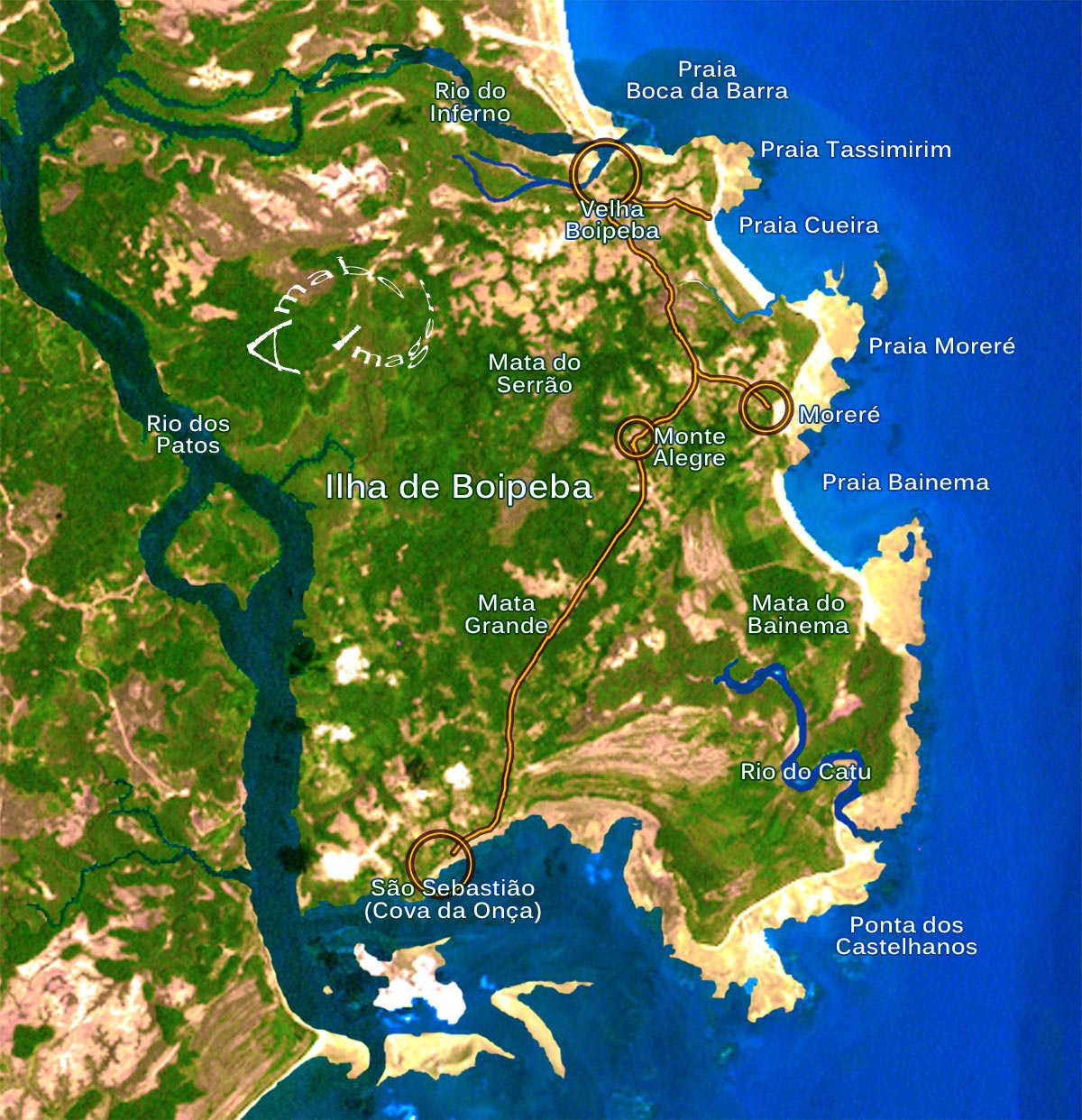
Tourist Points and Tours in Boipeba
1. Natural Pools of Castelhanos
The natural pools cannot be missing in your list of what to do in Boipeba!
To get to the natural pools of Castelhanos you need to go by boat, since they are well away from the sand. They are only formed at low tide – so you need to keep an eye on the tide table (usually the hotels will tell you what time the tide will be low) to be able to enjoy them.
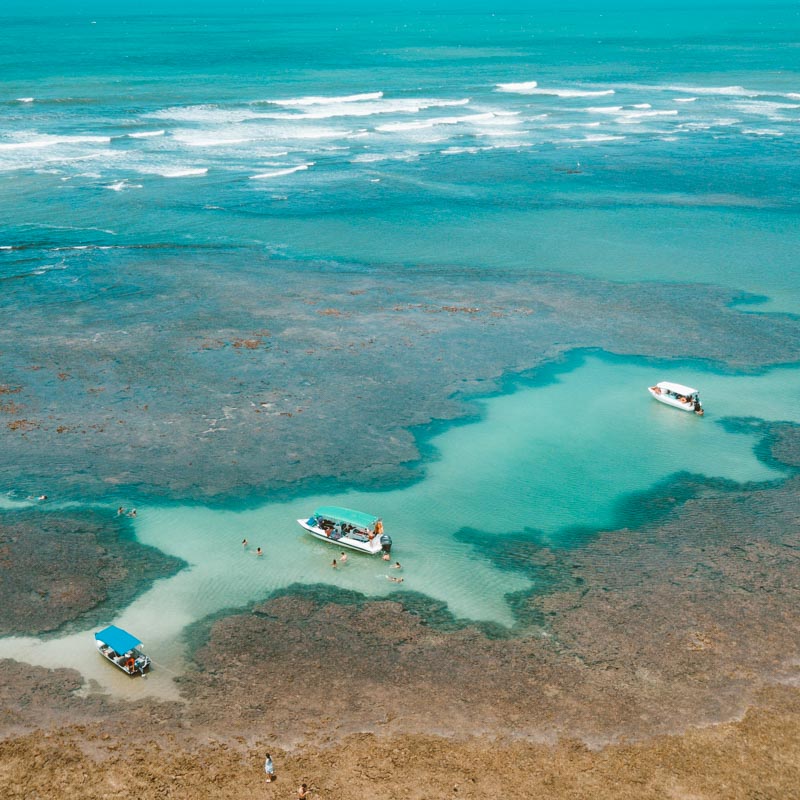
2. Spanish ship wrecked in 1530
In 1530, a Spanish ship crashed into the corals of Castelhanos Beach and sank.
Even today, on calm and low tide days, it is possible to see what remains of the ship.
Although much of it has already been “taken” by the corals, our sailor said that you can see the anchor and some other parts from inside the boat!
3. Castelhanos Beach

Castelhanos Beach is undoubtedly one of the most beautiful beaches in Boipeba! Very preserved, it is the perfect place for those who like empty beaches, without that huge flow of tourists.
Coconut trees on the seashore, pools that form at low tide and a white sand are the perfect combination.
4. Cova da Onça
Cova da Onça is a small village located 12.5km from Velha Boipeba.
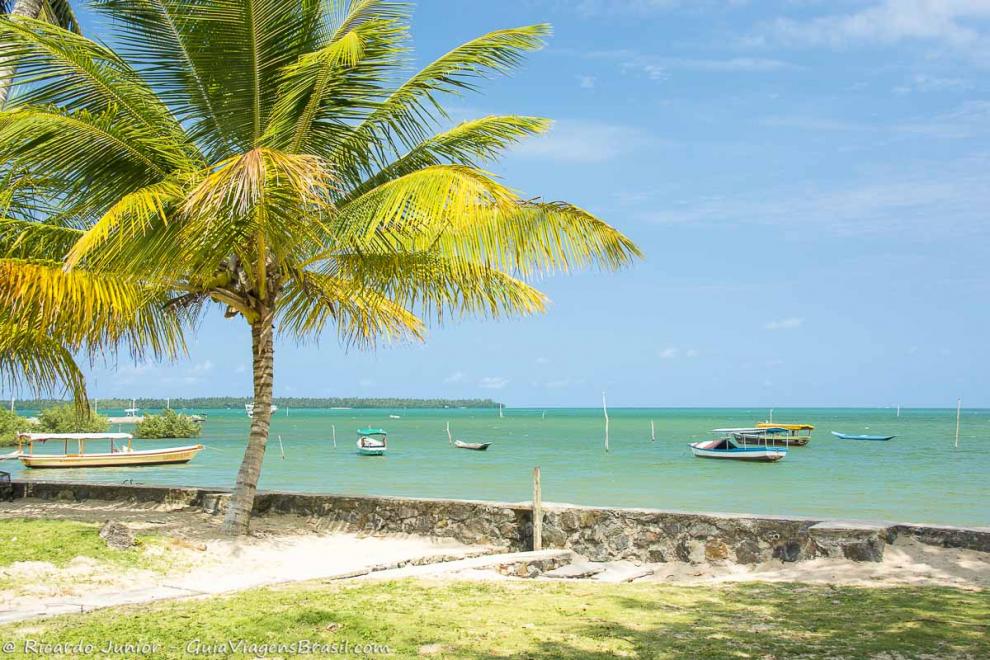
We went there by boat, during our trip to Castelhanos Beach, but there are also trails through the forest that connect Velha Boipeba to Cova da Onça.
The region is well known for its abundance of seafood, such as octopus and lobster, due to the corals. It is possible to catch them just with your hands!
5. Moreré Beach
Moreré is the second most populated village in Boipeba. This is where people looking for nature and tranquility stay.
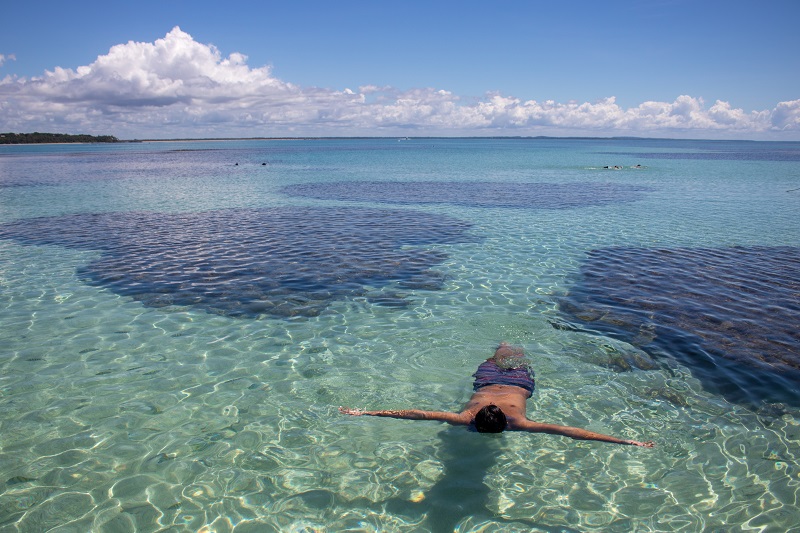
Vou will find some sandy alleys, with markets, simple houses and cozy little inns.
Highlight for the Pousada A Mangueira, which is more refined and almost on the edge of the beach, a great option to stay in Moreré.
Moreré Beach is very big. It has the main part, which is where the sandy alleys end. There are some native tents selling caipirinhas.
Walking a little to the left, towards Velha Boipeba, more inns and restaurants appear on the beachfront.
Be sure to go to Restaurante Paraíso and try the octopus moqueca with plantain. Besides the beautiful view, the food is divine.
There are also the natural pools of Moreré, which form at low tide. There are tours leaving from Morro de São Paulo to there. In high season it gets very crowded, but you can enjoy them too!
6. Bainema Beach
Another beautiful beach, deserted and surrounded by coconut trees. It is that perfect beach to spend the day!

We walked from Moreré Beach to Bainema Beach. Between one and the other, we passed by the famous “Rua das Flores”, known for its tunnel of flowers. It’s really beautiful, and there weren’t so many hibiscus on the day we went. In spring it must be very flowery!
We walked for 2.5km, with short breaks to take pictures, dive into the pools that form at low tide and enjoy nature.
Next, we arrive at “Ponta do Bainema”, which is right at the curve of the beach. There is a small village with a few houses (including houses for rent and camping!) and the little bar that bears the same name.
It is a delight to spend the whole afternoon there – hammocks scattered, tables, shower, snacks and caipirinhas. The perfect combo to enjoy a day at the beach!
7. Swimming in the Ouritibe River
A tip is to take the walk from Moreré Beach to Velha Boipeba. This is a great idea of what to do in Boipeba on your own, without the need for tours or guides!
Between Moreré Beach and Cueira Beach is the Ouritibe River.
You can only cross it at low tide and the tip is to spend a few hours there swimming in the river, with its cooler and refreshing waters!
8. Cueira Beach
Following the walk from Moreré Beach to Velha Boipeba, is Cueira Beach.
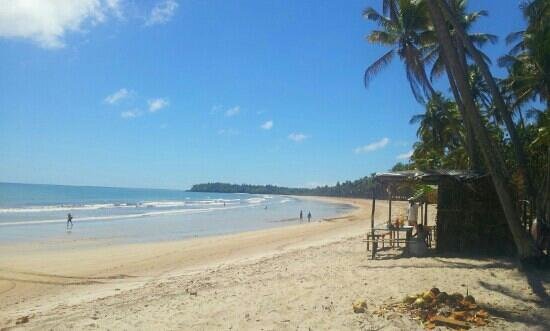
Beautiful with its many coconut trees by the sea and good waves for surfing.
This beach is a must for surfers!
9. Tassimirim Beach
Walking a little further, leaving Praia da Cueira, you will arrive at Praia de Tassimirim – a little smaller, with many almond trees framing the beach and some stalls for lunch.
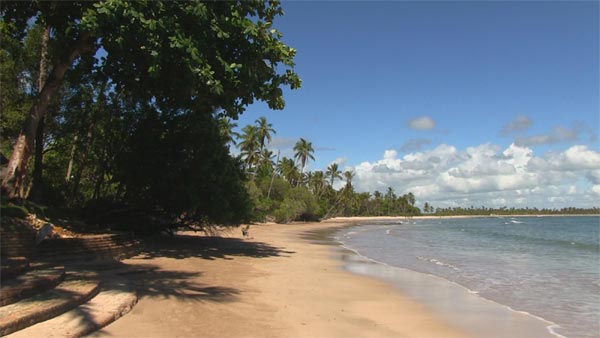
The beach is also full of natural pools. A good choice is to rest in the shade of the almond trees after a swim.
10. Stroll in Old Boipeba
Velha Boipeba is the main and most populated village on the island.
Those who like excitement, restaurant options and easy boat trips can bet on Velha Boipeba to stay.
If you are not staying there, it is worth reserving a late afternoon to stroll in the center of the village. There is a square with several stalls where you can try tapiocas of various flavors and caipirinhas.
Also noteworthy is the shopping center of Boipeba. The mall is super structured, facing the river, near the center of Boipeba. There are some little shops (many are still empty) like the ice cream parlor of an Italian that is very tasty!
How to get to Boipeba
- By plane: Addey Táxi Aéreo has regular and daily flights connecting Salvador to Boipeba and Morro de São Paulo.
- By car or bus: From Salvador, it is possible to go to Boipeba traveling by car or bus to Valença, where boats leave for the island, with prices between R$ 12 and R$ 35. Another possibility is to go to Torrinhas, on the island of Cairu, the closest point to Boipeba where you can reach by car.
- Boipeba can be reached by car.
- By catamaran or speedboat: It is possible to go by catamaran from Salvador to Morro de São Paulo, where you need to take a speedboat to Boipeba. The first stretch takes about 2h30m and the second, two hours (this one has a stop for bathing).
Where to stay in Boipeba
- Pousada Mangabeiras: Located in a plot of preserved forest, a little away from Velha Boipeba, with a good restaurant.
- Pousada Santa Clara: Located in Boca da Barra, very close to Velha Boipeba, and has one of the best restaurants on the island.
- Alizées Moreré: It is the best pousada in the village of Moreré, with comfortable rooms and beautiful sea views. Moreré beach.
Where to eat
- Barra do Guido e da Eliana: Cueira Beach.
- Toca da Onça: Vila da Cova da Onça.
- Lanchonete do Carlinhos: Velha Boipeba.
- Jorge Som: Velha Boipeba.
Weather
Between April and June it rains a lot in the region, and some inns and restaurants close their doors in May and June.
Bahia.ws is the largest tourism and travel guide for Bahia and Salvador.
Report about Boipeba in Bahia



















